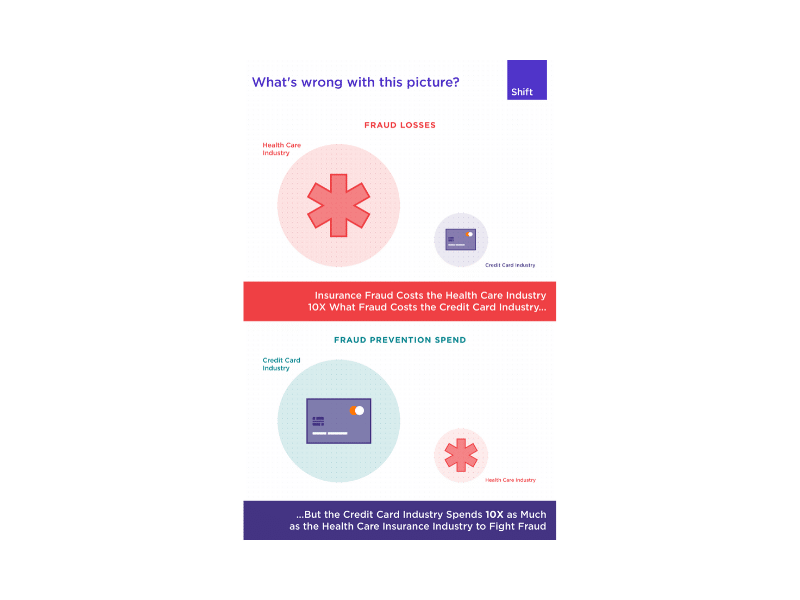Healthcare fraud, waste and abuse is a pervasive and escalating threat in the United States, pilfering billions of dollars annually from insurers and taxpayers alike. Orchestrated by organized criminal networks, these fraudulent activities exploit vulnerabilities in the healthcare system, leading to staggering financial losses, increased premiums, and diminished trust among members and beneficiaries. This blog delves into the intricate web of fraud, waste and abuse schemes, highlights pertinent cases, and underscores why immediate action is imperative for health plans.
Understanding the impact of healthcare fraud, waste and abuse
Healthcare fraud, waste and abuse spans a gamut of illicit activities, including billing for phantom services, upcoding, kickbacks for referrals, and falsification of patient information. These schemes not only drain financial resources but also compromise the integrity of healthcare delivery—adding risk to patient care.
Common types of under-detected healthcare fraud, waste and abuse and notable cases
Rendering medically unnecessary treatments: A couple from AZ, owning multiple medical facilities, together with several con-conspirators targeted elderly vulnerable Medicare patients, many of whom were terminally ill in hospice care, causing medically unnecessary amniotic wound allografts to be applied. From 2022-24, these fraudsters filed $900M+ in fraudulent claims to Medicare for medically unnecessary allografts applied to 500 patients. Medicare and other healthcare programs paid $600M+ in claims, with the fraudsters receiving $330M in illegal kickbacks as a result of the fraud schemes, which they used to further the fraud and diverted for their personal benefit and the benefit of others. (Justice.gov)
Billing for services not rendered: Fraudulent providers and accomplices systematically submit claims for services that were never provided, often using stolen patient identities to fabricate entire medical histories. In a notable case prosecuted in the Northern District of Texas, six defendants defrauded health plans of over $163 million through bogus telemedicine consultations and fabricated medical orders, illustrating the audacity and scale of such operations (Justice Gov).
Falsified patient information: Fraudsters manipulate patient diagnoses to justify unnecessary treatments and surgeries, inflating insurance claims. In Pennsylvania, defendants were charged with fabricating patient conditions to push unnecessary opioid prescriptions and medical services, defrauding insurers of approximately $5.4 million (Justice Gov).
Durable Medical equipment (DME) fraud, waste and abuse: Fraudulent networks profit from bogus claims for medical equipment, such as braces and durable medical goods. A recent lawsuit against multiple organizations exposed an $18.7 million scam involving falsified claims to a health plan, underscoring the extensive collusion across entities to exploit insurance payouts (lawstreetmedia)
Fraud, waste and abuse in the opioid crisis: The opioid epidemic has fueled significant fraud, waste and abuse through false prescriptions, kickbacks for opioid referrals, and unnecessary lab procedures, and treatments. In a major case, 16 doctors and clinic owners were sentenced for orchestrating a $250 million opioid fraud scheme across Michigan and Ohio, exposing millions to unnecessary opioids and fraudulent billing practices (Justice Gov) (Becker's Hospital Review).
Financial, regulatory, and reputational risks of FWA
The repercussions of ignoring healthcare fraud, waste and abuse are dire and multifaceted, encompassing severe financial losses, regulatory sanctions, and irreparable damage to reputations.
Financial risks: Fraudulent activities inflate healthcare costs, burdening consumers with higher premiums and jeopardizing insurer solvency. In 2023 alone, healthcare fraud, waste and abuse incurred estimated losses exceeding $100-300 billion, a staggering toll on both insurers and policyholders (justice.gov, NHCAA).
Regulatory risks: Regulators are intensifying scrutiny on fraud, imposing substantial fines and stringent oversight on non-compliant insurers. In 2023 alone, the top 10 recoveries under the False Claims Act (FCA) totaled $1.8B. Moreover, insurers risk losing lucrative government contracts, such as Medicare and Medicaid, if unable to curb fraudulent activities effectively (top 10 recoveries) .
Health systems dropping plans: Mounting financial pressures from fraudulent claims are prompting health systems to abandon Medicare Advantage plans. In 2023, several major hospital networks cited unsustainable losses and operational challenges, exacerbating insurer woes and threatening market stability (Becker's Hospital Review).
Reputational risks: Beyond financial penalties, the fallout from fraud, waste and abuse tarnishes insurers' reputations, eroding trust among stakeholders and customers alike. A 2023 study revealed that reputational damages from fraud, waste and abuse scandals can eclipse financial penalties by a substantial margin, undermining market position and customer loyalty (LegalTech Solutions) (CEPR).
Legacy fraud, waste and abuse detection systems vs. AI capabilities
Limitations of legacy systems: Traditional fraud, waste and abuse detection relies on rudimentary rule-based systems ill-equipped to identify sophisticated, evolving fraud, waste and abuse networks. These systems excel at identifying known fraud patterns but falter when confronted with novel, and previously unknown, criminal tactics and coordinated schemes. Relying solely on government alerts or patient tip-offs leaves insurers vulnerable to emerging and unexpected threats coming from sophisticated fraud, waste and abuse networks.
Advantages of AI in fraud, waste and abuse detection: Artificial Intelligence (AI) offers significant advantages over traditional methods in identifying and combating fraud, waste and abuse. AI can analyze large datasets from various sources, identifying patterns and connections that may indicate fraudulent activity. This includes examining company ownership, stakeholder relationships, linkages between providers, and common identifiers among patients.
- Proactive / efficient identification: AI systems can proactively identify potential FWA by connecting disparate data points and recognizing suspicious patterns. For example, AI can detect when multiple claims are linked to the same group of individuals or organizations, even if the connections are not immediately apparent.
- Efficiency: AI can process and analyze data much faster than human investigators, allowing for real-time detection and response. This reduces the time and resources spent on lengthy investigations. Generative AI (GenAI) further enhances efficiency by quickly and accurately reading medical reports and billing invoices, allowing for faster identification of discrepancies, anomalies, suspicious flags and potential fraud, waste and abuse.
- Comprehensive analysis: AI can integrate data from various sources, such as medical records, medical claims, government policy, financial transactions, as well as additional external data sources to provide a holistic view of potential fraud, waste and abuse. This comprehensive approach enhances the accuracy and effectiveness of fraud, waste and abuse detection.
- Network detection: AI can perform network detection, connecting multiple questionable actions by seemingly unrelated entities into a large coordinated criminal nexus bleeding the system. By mapping these connections, AI can reveal complex fraud, waste and abuse schemes that traditional methods might miss.
- Continuous learning: AI models can continuously strengthen from user validation and outputs. Postpayment detection outcomes and historical data analysis can be used to improve the accuracy and detection capabilities at the prepayment level.
Impact of a ‘home-grown’ solution versus external vendor on FWA
Implementing AI systems for fraud, waste and abuse detection, however, comes with its own set of challenges. Building these systems in-house requires significant investments in time, cost, and human resources. According to industry reports, developing AI-based fraud, waste and abuse detection systems involves extensive data collection, algorithm development, and continuous model training. Insurers may need to allocate substantial budgets for technology infrastructure, hire specialized data scientists, and ensure ongoing maintenance and updates to keep the systems effective. These expensive data science resources and AI/ML infrastructure costs are substantial, and there is no guarantee that the solution will offer results from day one. This high investment underscores the importance of carefully planning and budgeting for AI integration to maximize its benefits and ensure long-term sustainability in fraud, waste and abuse detection efforts. Pursuing such an initiative with a partner with the skills and expertise in this area will prove to be far more effective, less risky and more cost effective than an insurer trying to build an AI system themselves.
Conclusion
The pervasive threat of healthcare fraud, waste and abuse demands decisive action from insurers. By leveraging advanced technologies like AI and strengthening collaboration with regulatory bodies, insurers can stem financial losses, mitigate regulatory risks, and uphold their reputations. Prompt and proactive measures are essential to fortifying the healthcare landscape against criminal exploitation and ensuring equitable access to quality care for all Americans. Embracing innovation in fraud, waste and abuse detection is not just prudent—it's imperative for safeguarding the integrity of healthcare in the US.
About the Author

Head of Sales Enablement & Market Intelligence, Shift Technology


